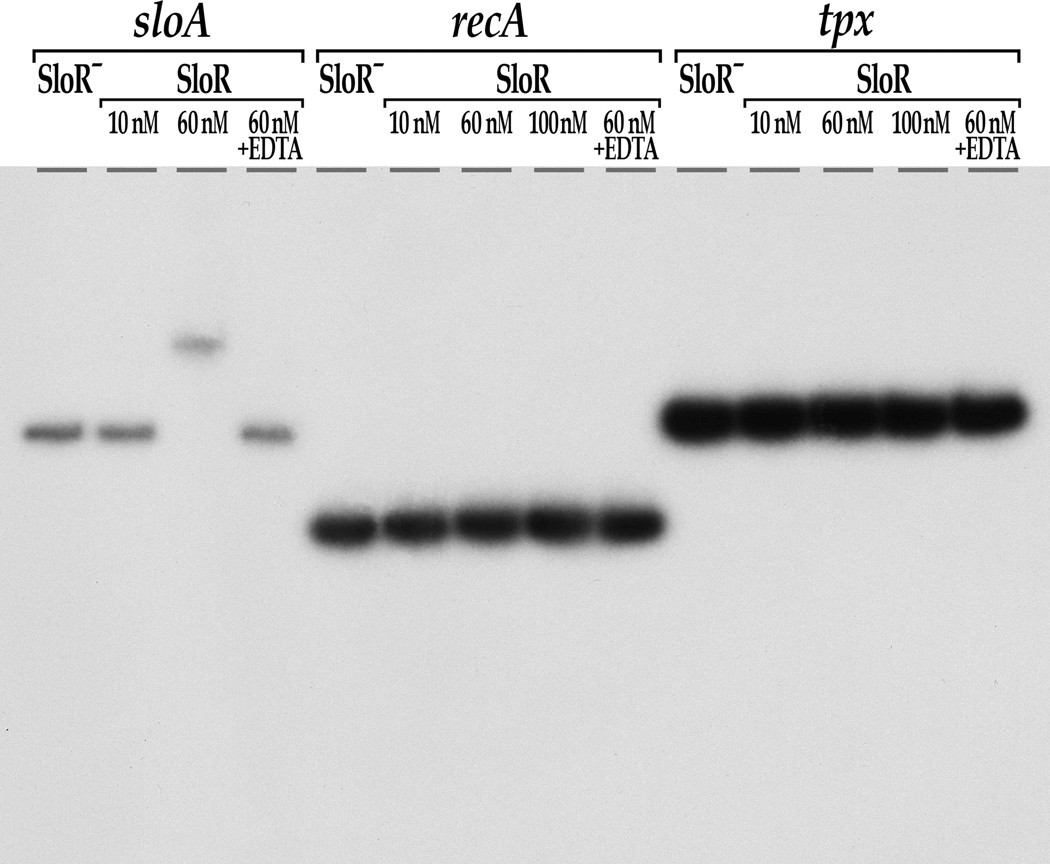Fig. 4.
SloR shifts an SRE-containing promoter fragment that precedes the sloABC operon (positive control) but not the tpx promoter region or a recA negative control. Shown are the results of EMSA performed on a 6% non-denaturing polyacrylamide gel with a [γ-32P] end-labeled tpx-specific target sequence and varying concentrations of SloR. Protein-DNA complexes were resolved for a total of 350 volt-hours. Similar results were generated when SloR was provided in 40 molar excess (data not shown). These findings indicate that the impact of SloR on the tpx oxidative stress gene is indirect. The addition of EDTA abrogated the sloABC band shift, consistent with metal ion-dependent SloR binding at this locus.

